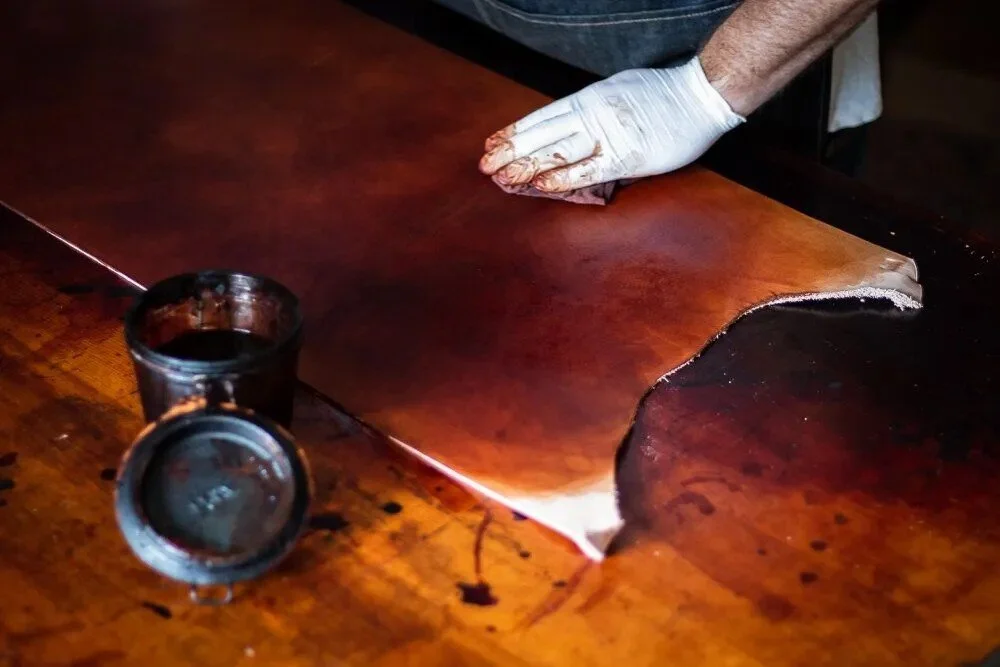The Leather
Unless otherwise stated, the leather I use is full-grain, vegetable tanned, and comes to me un-dyed.
I work most often with cow, calf, horse, and goat leathers, but can also obtain buffalo, kangaroo, sheep, kid, boar, deer, and pig in vegetable tannages, and a vast variety of leathers like reptiles, fish, and exotic mammals in chrome, oil, and other tannages.
Below you will find a handful of my favorite tanneries in the world, whose products I use the most.
-
Founded in Toronto and now at home in Curwensville, Pennsylvania, Wickett & Craig might be the oldest surviving vegetable tannery in North America. They have survived the changing tanning landscape by continuing to produce some of the best vegetable tanned leather in the world, matched in America only by Hermann Oak for saddle and tack leathers. Their leather is the first thing I reach for when making heavy-duty work belts.
-
Wickett & Craig might take the title of oldest North American vegetable tannery, but Hermann Oak might be the most all-American. In their fifth generation of family ownership, they tan hides from exclusively American cattle in the time-consuming and deliberate old-world vegetable tanning tradition.
-
The last in the trifecta of traditional American tanneries, Horween has been called the best tannery in the world—and it might just be true. Producing the official leather for American footballs for seven decades, two of the best shoe leathers in the world (Shell cordovan and Chromexcel), and leading the industry in vegetable, chrome, and combination tannages, they have earned their legendary reputation.
-
Along with Maryam, the best horse leather tannery in Europe. Where they beat out Maryam is their laser focus on horse leather and their superb innovation and aesthetic choices. Their hand-dyed marbled and museum cordovans are among the most beautiful I’ve seen, and their horse front is a delight for smaller leather goods.
-
I might pick Rocado cordovan over Maryam if a gun was put to my head, but there’s no doubt in my mind that Maryam makes some of the only truly luxury vegetable-tanned kangaroo and deer in the world. Their excellent horse and calf round out their catalog. Maryam might be the tannery I’d chose if I could only work with one for the rest of my life.
-
La Perla Azzurra (The Blue Pearl) has a soft spot in my heart. A single shoulder of their natural vegtan was one of the first luxury cow leathers I’ve ever worked with, and to this day I have hardly found one to match its incredible smell, feel, and patina. Using 100% European origin hides, their leathers will always have a place in my workshop.
The Dye
Likewise, unless otherwise stated, I will hand-dye all of the leather I use for your order. I can do this either by brush/cloth dyeing, which is more authentic, gives more dye penetration, and brings out more variation and character; by airbrush, which will give the most consistent finish; or by dip-dyeing, which gives the greatest penetration.
Hand-dyed leather produces what is called a “tea-core” effect, where scratching and creasing can reveal some of the natural leather color below. This can be desirable in its own right, or can be easily corrected if you want to clean up the appearance of your item.
Below are my usual dye options, which have a long history, but are essentially modern pigments. I would welcome the opportunity to experiment with more traditional dyes like vinegaroon, madder, and cochineal.
-
My current favorite dyes to work with. They produce a fantastic array of colors that have some of the best concentration and most vivid tones I’ve seen.
-
My preferred water-based dyes. Founded in the heart of Italian tanning country, their availability is limited in the United States—but their water-based dyes are worth hunting down as a gentler option for delicate leathers.
-
Their regular availability and options for different pigment types and dye solvents make them the most household name in American leather-working.
The Thread
I stitch all of my projects entirely by hand. The saddle stitch, which uses two needles and two threads, is the standard for most leather seams, but there are numerous other stitches used for bags, coverings, and corners.
One of the concessions I have made to modern progress is that I really do think polyester thread is ideal for almost all leather applications. It is very strong, has excellent resistance to UV light and moisture, is highly colorfast, and is readily available in an array of colors and weights.
However, I am happy to use whatever thread you desire. Nylon has better abrasion resistance, linen is the most traditional and excellent natural fiber, and silk can be used for decorative or delicate work. Below are my preferred polyester options.
-
I don’t think there’s an American thread manufacturer that can compete with Maine Thread for leatherwork. With decades of experience, excellent quality control, and the best braided thread I’ve worked with, they are my go-to for all but the most delicate pieces (which requires thinner options.)
-
JK Ritza “Tiger” Thread is one of the most recognizable and venerable supplies in the fine leather industry. Available in a good range of colors and medium to heavy weights, it is a great option for almost any project.
-
Nagai Yoriito may be the most innovative thread manufacturer in the world, producing not only one of the most highly-regarded threads for hand-sewn leather goods (Vinymo MBT) but also textiles like Vectran, used in Mars rover parachutes. Their Vinymo MBT bonded polyester comes in a colossal array of colors and is my preference for all fine and delicate work.
Dressings & Finishes
Conditioning and finishing leather might be my favorite part of the entire process. The preparation and dyeing of the leather can leave it looking a bit sad and lifeless, but by the time the conditioning and finishing is done, it takes on a lush glow like nothing else.
There are no better conditioning leather than natural substances, including neatsfoot oil, lanolin, beeswax, mink oil, tallow, and others. I will generally use gentle heat, massaging, and multiple applications to ensure that the natural hides I use are thoroughly treated.
For finish, pine pitch and synthetic resin are the best options for water resistance, but all of the wax finishes I use are sufficient to protect against moderate exposure. While synthetic resins are a much quicker route to a glossy finish, I would rather spend the time to give a natural shine using materials like carnauba wax, which give a much richer finish and can be easily maintained.
Below are my most reliable treatments and finishes, including two that I mix myself.
-
Ray Holes Saddle Butter and Chap Wax are two of my favorite all-natural, traditional American-made leather treatments. Both are a blend of natural waxes and oils, with Saddle Butter having better penetration and a softer hand, and Chap Wax giving superior shine and water resistance.
-
My personal favorite all-natural waterproofing. Simple enough, Pitchblend is a mix of mink oil, beeswax, and pine pitch, which gives incredible leather penetration, a luxurious hand, and a water-resistant semi-gloss finish.
-
A mixture of natural glue paste (using casein, I believe), resin, wax, and silicone, it is widely considered the most effective and durable burnishing compound for treating cut leather edges. This is one other application where modern materials win out, especially considering the incredibly minimal quantity used to burnish even large projects.
-
Arguably the definitive series of leather dressings and finishes. With both their modern “Beaute de Cuir” and their traditional “Medaille d’Or” lines, Saphir offers purely natural leather treatments using only the best substances available, and a complete lack of resin or silicone.
-
A slightly controversial but fascinating and time-honored dressing, BMLD is a mixture of cedar oil, lanolin, and beeswax. It was used for archival purposes for many years, and though it has fallen out of fashion there, I think it is an excellent option for personal leather goods.
-
I’ll confess: I haven’t actually made this yet. A mixture of linseed oil, suet, beeswax, and rosin, it was said to have been used for a century before it was recorded in the 1796 American Almanac.
“Fisherman stand in their boots, in water, hour after hour, without inconvenience. For three years past, all my shoes, even of calf skin, have so been served; and have, in no instance admitted water to pass through the leather. It is also a good salve - a Basilicon.”
Please, somebody, order a little satchel or something and let me use this!




